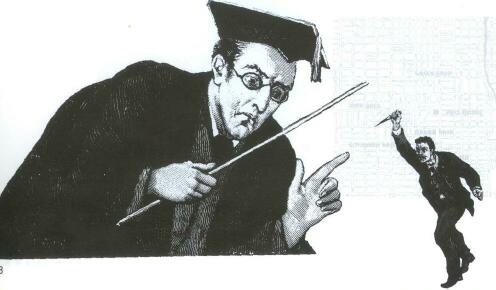|
Overview
Main Ideas
Cultural conflict often arises from
misperceptions, false assumptions, and
prejudice. In multicultural societies where
many diverse points of view exist, the possibility of conflict between individuals and
groups is often increased. Compromise,
however, can result from the search for
financial security and social acceptance.
In 1908, Chicago was a booming
metropolis with more than one million people, three-quarters of whose population was
either foreign born or the children of foreign
born. Immigrants came to Chicago from
European countries, each group bringing
with them dreams and expectations for a
new way of life. In Chicago these immigrant
groups often conflicted or compromised with
each other as they faced prejudice, discrimination, political injustice, or economic
inequality in the struggle to make a place for
themselves in a new land.
Connection with the Curriculum
This material may be used to teach
Illinois, Chicago, and U.S. history, sociology,
law, government, or social studies classes.
Teaching Level
This material is for high school students.
It may also be appropriate for seventh and
eighth graders who are interested in history.
Materials for Each Student
• A copy of this article's content portion,
activity pages, a pen or pencil and
paper
• To deepen understanding, optional use
of the encyclopedia, dictionary, books
on immigrants, books on Jane Addams
as well as current newspapers
Objectives for Each Student
• Elicit ideas on the resolution of cultural
conflict without violence.
• Show cause and effect between
prejudice and discrimination.
• Show relationships between attitudes,
beliefs, and laws.
• Show relationship between dreams
and reality.
27
SUGGESTIONS FOR
TEACHING THE LESSON
|
Opening the Lesson
• Have the students brainstorm about
the ideas they hold on prejudice and
discrimination. The ideas elicited from
the students may be organized in the
following categories: feeling; action;
and laws. Use these categories to
establish cause and effect
relationships.
• Stimulate a discussion about recent
immigrants in the United States.
• Have students discuss their own
family history or their area's ethnic
background.
Developing the Lesson
• Have students read the article's
content portion. The following activities
may be assigned as classroom work
or as homework:
A. Discuss concepts found in the
reading: prejudice, discrimination,
anti-Semitism, responsibility,
cultural diversity, and individual
rights.
B. Simulate or role play various points
of view as in an investigation of the
case.
C. Collect articles in journals or
newspapers that reflect immigrants'
experiences in the 1990s.
D. Research immigration laws.
Concluding the Lesson
The conclusion of the lesson may
reinforce critical thinking skills by addressing the list of objectives for each student.
A concluding discussion could include
points listed on the board and their validity
examined.
Extending the Lesson
• Visit the Jane Addams' Hull House
Museum in Chicago and tour its
neighborhood: 800 S. Halstead Street,
Chicago, IL 60607-7017; phone:
(312)413-5354.
• Invite a community lawyer to discuss
laws on immigration.
• Assign a paper or project on cultural
differences in the United States today.
Assessing the Lesson
• Students might write essays on the
Averbuch case to demonstrate their
understanding of cause and effect
relationships.
• Students may research the Averbuch
inquest and re-create it through role
play.
• Students may locate and display
articles on recent cases that may be
similar to the Averbuch conflict.
28

- Consider the ethnic make-up of Chicago in 1908. Explain why the Averbuch incident had a powerful impact on the city.
ACTIVITY -1 MAP
THE HULL-HOUSE NEIGHBORHOOD IN 1908
- List the largest ethnic groups living in the area surrounding
Hull House. Research their customs/values and infer why they
may have lived peacefully together or why conflict may have
emerged.
- Today, Chicago is a mosaic of ethnic neighborhoods. List the new immigrants that live in Chicago or your area. What
are the reasons for immigrants going to these areas?
- How does overcrowding and ethnic diversity affect a community?
- Who are the Americans? Explain your answer. What are the major ethnic groups in America today?
29

- List and explain reasons why Eastern European Jews immigrated to the
United States.
- What were the prevalent attitudes toward immigrants in Chicago, Illinois,
at the turn of the century?
- Define anarchism, and explain how the fear of this movement led to Chief
Shippy's action on March 2, 1908.
- The Averbuch incident brought to the surface the tension that existed
between the new immigrants and the more established members of society.
Describe the conflict.
- Do you think Jane Addams would have supported the attorney's compromise?
Support your answer.
30

Fill in using information found in the reading section on the Averbuch case.
Beliefs/Attitudes/Ideas/Assumptions ..............Produced These Actions/Responses
- Police Chief Shippy
Belief:_______________________________________
Response: ___________________________
- Public
Belief:_______________________________________
Response:____________________________________
- Police
Belief:.___________________________________
Response:__________________________________
- Olga Averbuch
Belief:___________________________________
Response:____________________________________
- Eastern European Jews
Belief:_________________________________
Response:____________________________________
- German Jews
Belief: ______________________________
Response: ____________________________________
- Jane Addams
Belief:________________________________
Response: ______________________________
Click Here to return to the Article
31
|


